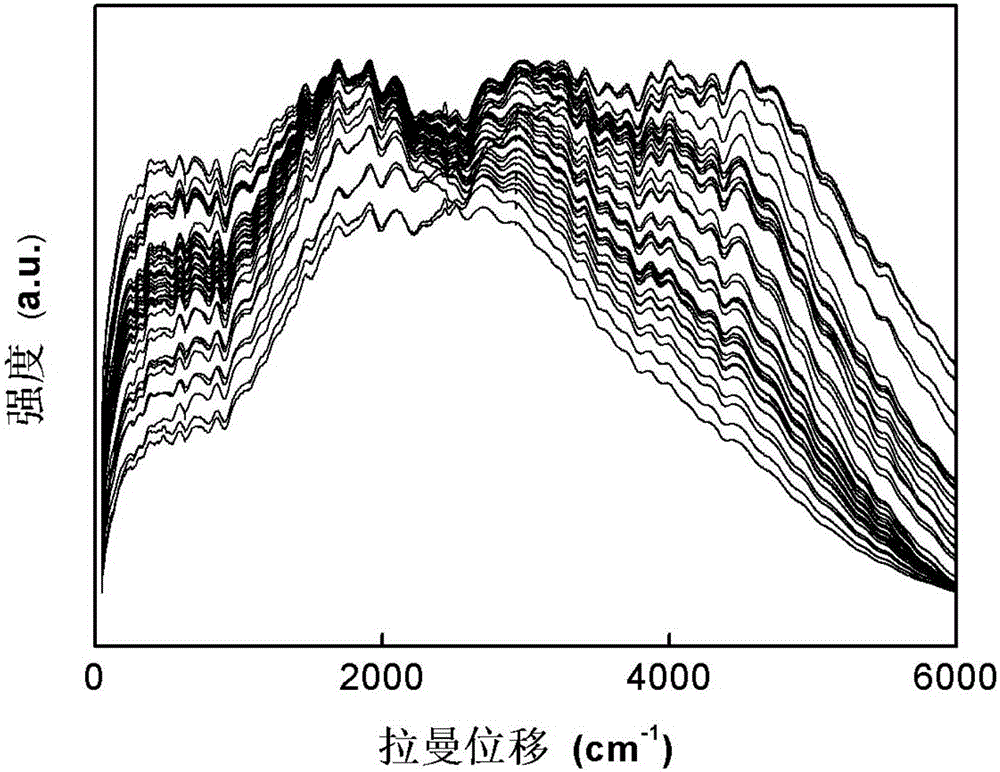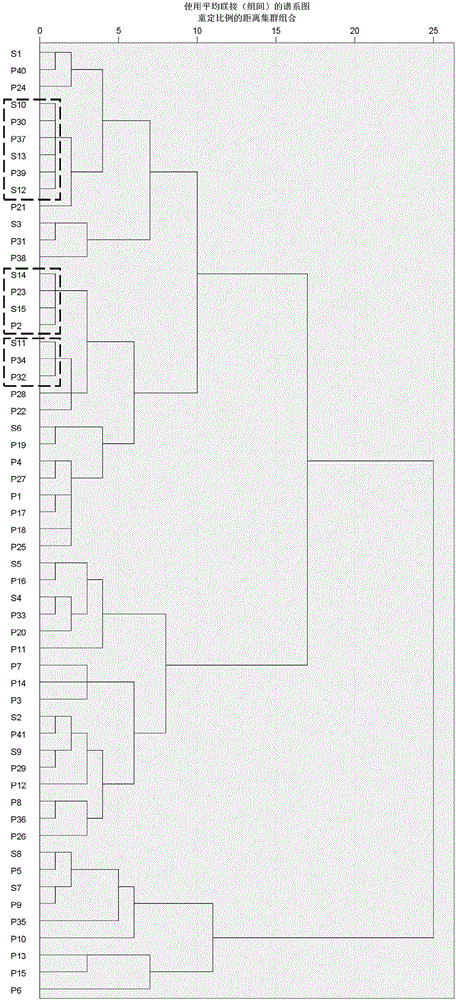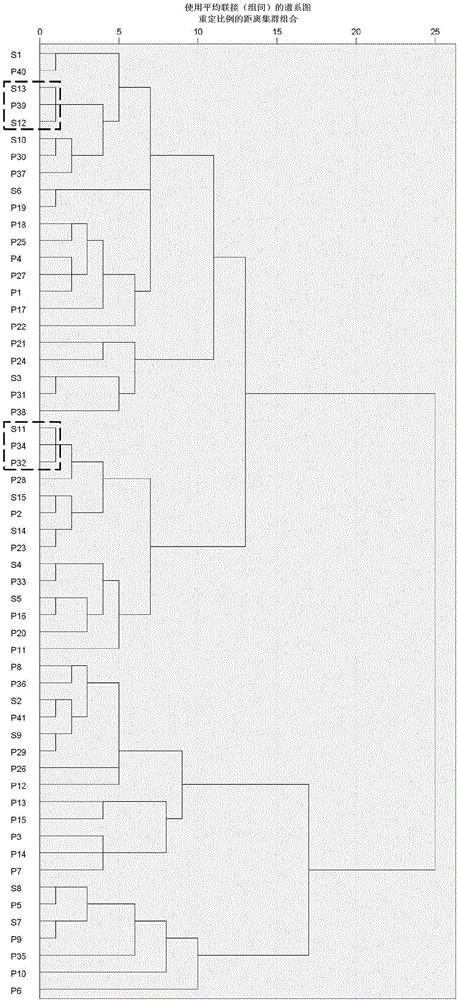High-identification crude oil dactylogram constructing and identifying method
A technology of fingerprint spectrum and crude oil, which is applied in the field of high-discrimination crude oil fingerprint spectrum construction and identification, which can solve the problems of insufficient intuition and obvious differences in fingerprints and insufficient identification power, and achieve simple and convenient fingerprint comparison, improve efficiency, and fingerprint identification strong effect
- Summary
- Abstract
- Description
- Claims
- Application Information
AI Technical Summary
Problems solved by technology
Method used
Image
Examples
Embodiment 1
[0056] In this embodiment, 41 crude oil standard samples were used, respectively from Sinopec Beijing Petrochemical Research Institute, Sinopec Fushun Petrochemical Research Institute, and China University of Petroleum (Beijing) Heavy Oil Laboratory. 15 crude oils were randomly selected as blind samples. 20 parallel samples were collected for each standard sample, and 10 parallel samples were collected for each blind sample. The numbers of standard samples and blind samples start with letters P and S respectively, as shown in Table 1.
[0057] Table 1. Origin and number description of different types of crude oil standard samples (41 types) and blind samples (15 types)
[0058]
[0059]
[0060] The spectral fingerprint of each oil sample was collected by a Horiba JY XploRA confocal Raman microscope. The detection range is 50-6000cm -1 , the filter is set to 0.1%, the aperture and slit are 500 μm and 200 μm respectively, the grating is 1200T, the objective lens is 10×...
Embodiment 2
[0087] Using SPSS software, stepwise discriminant method was used to remove intensity variables that were not important for discrimination from the original spectral data. The discriminant method used is Wilk's lambda method, and the discriminant standard is the value of the statistic F. When the F value is greater than F 上限 =1.84, keep this variable; when F value is less than F 下限 =0.71, this variable was eliminated. Through this step, 2558 dimensions of the 2915-dimensional variables of the original spectrum were eliminated, and 357 variables with strong discriminative ability were retained.
[0088] Then, the canonical discriminant function group is established according to the principle of "minimum deviation within the same class and maximum deviation between classes". The corresponding standard sample and blind sample data were respectively substituted into the discriminant function group, so that they were respectively projected into a new low-dimensional (40-dimensio...
Embodiment 3
[0099] Using SPSS software, stepwise discriminant method was used to remove intensity variables that were not important for discrimination from the original spectral data. The discriminant method used is Wilk's lambda method, and the discriminant standard is the value of the statistic F. When the F value is greater than F 上限 =5.84, keep this variable; when F value is less than F 下限 =4.71, this variable was eliminated. Through this step, 2870 dimensions of the 2915-dimensional variables of the original spectrum were eliminated, and 45 variables with strong discriminative ability were retained. These reserved variables correspond to wave groups numbered 1 to 45 in Table 2.
[0100] Then, the canonical discriminant function group is established according to the principle of "minimum deviation within the same class and maximum deviation between classes". The corresponding standard sample and blind sample data were respectively substituted into the discriminant function group, ...
PUM
 Login to View More
Login to View More Abstract
Description
Claims
Application Information
 Login to View More
Login to View More - R&D
- Intellectual Property
- Life Sciences
- Materials
- Tech Scout
- Unparalleled Data Quality
- Higher Quality Content
- 60% Fewer Hallucinations
Browse by: Latest US Patents, China's latest patents, Technical Efficacy Thesaurus, Application Domain, Technology Topic, Popular Technical Reports.
© 2025 PatSnap. All rights reserved.Legal|Privacy policy|Modern Slavery Act Transparency Statement|Sitemap|About US| Contact US: help@patsnap.com



